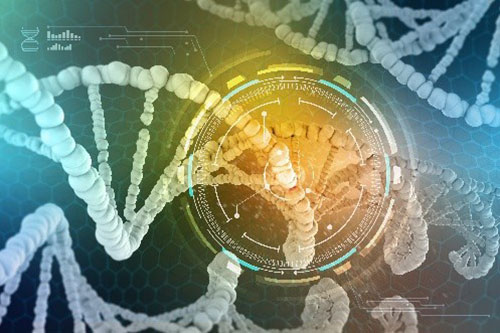
In the expanding frontier of genomics, synthetic biology, and advanced molecular diagnostics, precise control over nucleic acid structures is foundational. BOC Sciences delivers expert-level DNA/RNA Modification Services with unmatched customization capabilities to empower molecular design, enhance assay performance, and support next-generation therapeutic development at the preclinical stage. Our platform integrates sophisticated chemistry, precise enzymatic tools, and rigorous quality control protocols to provide highly customized, reproducible, and scalable nucleic acid modifications.
In advanced molecular research, unmodified nucleic acids often lack the stability, specificity, or functional versatility required for complex experimental or therapeutic applications. DNA/RNA modifications address these challenges by enhancing the biochemical and structural properties of nucleic acids. Below are several key reasons why DNA/RNA modification is indispensable for today’s cutting-edge research:
Control molecular behavior, such as stability, hybridization kinetics, and secondary structure.
Facilitate tracking and visualization, using fluorescent or affinity tags.
Improve delivery and uptake, by modifying charge, hydrophobicity, or backbone structure.
Enhance resistance to nucleases, crucial for in vivo or long-term applications.
Introduce functionality, including ligands, crosslinkers, or reporter systems, that enable novel experimental designs.
Collectively, DNA/RNA modifications empower scientists to design experiments that are more robust, specific, and translatable. These alterations are not merely enhancements—they are foundational elements of high-precision biological research.
At BOC Sciences, our DNA/RNA modification services are engineered to address the increasing complexity and specificity demands of modern molecular biology, synthetic biology, and preclinical research. Modifications at the nucleotide, sugar, backbone, and labeling levels profoundly impact the stability, binding affinity, resistance to nucleases, and functional versatility of oligonucleotides. Our extensive portfolio offers unparalleled customization and precision to enhance your nucleic acid-based experimental and therapeutic designs.
Our synthesis platform supports incorporation of canonical DNA bases (adenine, thymine, cytosine, guanine) and RNA bases (adenine, uracil, cytosine, guanine) with stringent quality assurance. Beyond standard bases, we provide an array of base modifications such as 2'-O-methyl RNA, 5-methylcytosine, and inosine, facilitating enhanced stability and biological mimicry. Inclusion of degenerate bases allows for construction of diverse oligonucleotide libraries tailored for mutagenesis and screening studies.
| Types of Modifications | Description | Prices |
| Base Modifications | Modified bases like 5-methylcytosine, inosine, and pseudo-uridine adjust oligo duplex stability and biological interactions, supporting epigenetics and functional RNA research. We employ optimized chemistries to incorporate these without compromising oligonucleotide quality. | Inquiry |
| Standard DNA Bases | We synthesize oligonucleotides with canonical DNA bases (A, T, C, G) under strict quality controls, ensuring high purity and accurate sequence fidelity essential for PCR, sequencing, and molecular probes. Various purification methods (HPLC, PAGE) support diverse research requirements. | Inquiry |
| Standard RNA Bases | RNA oligonucleotides with A, U, G, and C bases are synthesized with RNase-free protocols to maintain integrity, supporting RNA interference, aptamer design, and structural studies with high yield and precision. | Inquiry |
| 2'-Omethyl RNA Bases | The 2'-O-methyl modification enhances nuclease resistance and reduces immunogenicity, critical for stable RNA interference tools and antisense oligos. Our synthesis process guarantees consistent incorporation, enabling reproducible biological outcomes. | Inquiry |
| Degenerate Bases | Equimolar mixtures of nucleotides at specific positions allow generation of diverse oligo libraries for SELEX or mutagenesis, enhancing the scope of selection experiments and evolutionary studies. | Inquiry |
| Peptide Nucleic Acid PEGylation | PEGylated PNA refers to PNA conjugated with PEG, enhancing its stability, solubility, and pharmacokinetics. This modification expands PNA’s applications in gene regulation, diagnostics, and therapeutics, including antisense therapy and targeted drug delivery. | Inquiry |
Chemical modification of the oligonucleotide backbone and sugar moieties plays a critical role in nuclease resistance and modulation of biophysical properties. Our offerings include phosphorothioate backbones, methylphosphonates, and boranophosphate linkages, as well as 2'-fluoro and 2'-amino ribose modifications. These alterations improve metabolic stability and optimize hybridization profiles, thereby increasing the robustness and specificity of nucleic acid probes and therapeutics.
| Types of Modifications | Description | Prices |
| Backbone Modifications | Phosphorothioate linkages and other backbone alterations enhance nuclease resistance and modulate oligo pharmacokinetics. Methylphosphonate and boranophosphate backbones offer unique charge and hydrophobicity profiles, enabling tailored biological interactions. | Inquiry |
| 2'-Modifications | Substitutions at the 2'-ribose position, including 2'-fluoro and 2'-amino groups, improve nuclease resistance and hybridization affinity, optimizing oligos for antisense and RNA-targeting applications. | Inquiry |
| Phosphorylation | Site-specific 5' or 3' phosphorylation facilitates enzymatic ligation and molecular cloning, enabling seamless integration into complex workflows. | Inquiry |
| Chain Terminators | Incorporation of 3'-dideoxynucleotides or inverted bases halts polymerase extension, supporting sequencing, antisense inhibition, and strand-blocking strategies. | Inquiry |
| Peptide Nucleic Acids (PNA) | PNAs replace the sugar-phosphate backbone with a neutral peptide-like structure, enhancing binding affinity and enzymatic stability, ideal for diagnostics and therapeutic development. | Inquiry |
Functionalization with reactive moieties such as amino and thiol groups facilitates site-specific conjugation to fluorophores, biotin, nanoparticles, or solid supports. Spacer modifications, including hexaethylene glycol (HEG) and other flexible linkers, provide critical spatial separation to reduce steric hindrance, enhance molecular flexibility, and improve assay performance in complex environments.
| Types of Modifications | Description | Prices |
| Amino Modifiers | Amino groups introduced at the 5', 3', or internal positions enable facile conjugation with a wide array of functional moieties via NHS ester chemistry. These reactive handles allow covalent attachment of fluorophores, enzymes, nanoparticles, or affinity tags, expanding the utility of oligonucleotides in imaging, immobilization, and targeted delivery. | Inquiry |
| Spacer Modifiers | Spacer molecules such as C3, C6 alkyl chains, or polyethylene glycol (PEG)-based units like hexaethylene glycol (HEG) are incorporated to introduce flexibility, reduce steric hindrance, and improve accessibility of the oligonucleotide in hybridization or enzymatic reactions. Spacer modifications are crucial in optimizing probe designs, especially in applications such as surface plasmon resonance (SPR) and fluorescence resonance energy transfer (FRET). | Inquiry |
| Thiol Modifiers | Thiol (-SH) functional groups enable specific and stable conjugation chemistry via maleimide-thiol coupling or gold-thiol bonding, widely used in biosensor fabrication and nanomaterial attachment. Our thiol-modified oligonucleotides are delivered with protecting groups to maintain stability until conjugation. | Inquiry |
| Click Chemistry Modifications | Incorporation of azide or alkyne groups enables bioorthogonal conjugation through copper-catalyzed or strain-promoted azide-alkyne cycloaddition reactions, facilitating modular and site-specific labeling without interfering with oligonucleotide function. This technology is increasingly pivotal in multiplexed assays and functional biomaterials development. | Inquiry |
Sensitive detection and quantification of nucleic acids require precise labeling with fluorescent dyes, affinity tags, or quenchers. BOC Sciences offers a broad selection of reporter modifications, including common fluorophores (FAM, Cy3, Cy5), biotin, and specialized quencher molecules, enabling applications ranging from real-time PCR probes to molecular beacons and advanced imaging techniques. Our expertise extends to dual-labeled probes optimized for multiplexed detection and high signal-to-noise ratios.
| Types of Modifications | Description | Prices |
| Labeling Modifications | Biotin, digoxigenin, and other affinity labels are introduced to facilitate sensitive detection and capture in ELISA, western blotting, and affinity purification workflows. These modifications provide robust, high-affinity binding platforms for downstream analytical and preparative applications. | Inquiry |
| Fluorescent Modifications | A comprehensive panel of fluorophores—including FAM, HEX, Cy3, Cy5, TAMRA, and ROX—are available for precise, bright, and stable labeling of oligonucleotides. These fluorophores are incorporated at termini or internal sites, optimized for maximum quantum yield and photostability, enabling applications such as qPCR, FISH, TaqMan, and real-time imaging. | Inquiry |
By partnering with BOC Sciences for DNA/RNA modification services, researchers gain access to a comprehensive, scientifically rigorous, and fully customizable platform designed to elevate the performance of nucleic acid-based technologies in preclinical research.
Connect with us today—our specialists are equipped with deep expertise to support your nucleic acid modification needs!
Get A QuoteIn additions, BOC Sciences offers an extensive portfolio of oligonucleotide modification services designed to enhance the physicochemical properties, stability, and biological activity of your nucleic acid constructs. Our expertise encompasses a wide range of targeted chemical alterations, enabling precise customization to meet diverse research demands.

Our fluorescent labeling services incorporate high-performance dyes such as FAM, Cy3, Cy5, Alexa Fluor series, and others at specific oligonucleotide positions (5’, 3’, or internal). This precise conjugation enables highly sensitive detection and quantification in applications including real-time PCR, molecular beacon assays, and fluorescence in situ hybridization (FISH). We optimize labeling chemistries to maintain probe integrity and signal stability under experimental conditions, delivering enhanced signal-to-noise ratios critical for accurate molecular diagnostics and imaging.
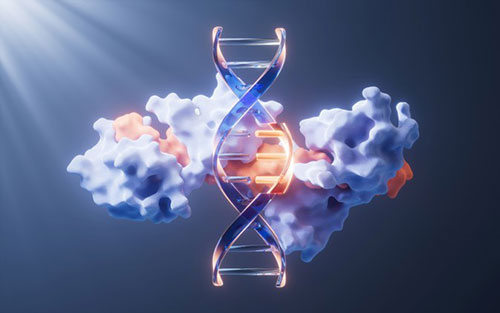
Our base modification services include incorporation of chemically modified nucleotides such as 2’-O-methyl, 2’-fluoro, and other analogs that enhance hybridization specificity and thermal stability. These modifications are essential in antisense oligonucleotides and siRNA to reduce immunogenicity and improve target recognition. By precisely integrating these bases, we enable refined control over oligonucleotide-target interactions, reducing background noise and increasing functional potency in gene-silencing or regulatory applications.
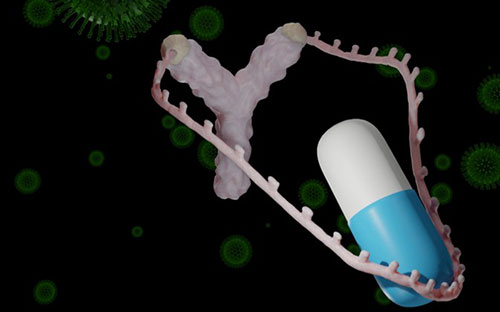
Targeted chemical modifications are available to modulate RNA splicing events or introduce reactive groups that facilitate downstream conjugation or structural studies. Such modifications enable researchers to study alternative splicing mechanisms or develop novel therapeutic oligonucleotides with enhanced control over RNA processing. Our tailored chemical splicing modifications provide critical tools for dissecting gene expression regulation at the RNA level.
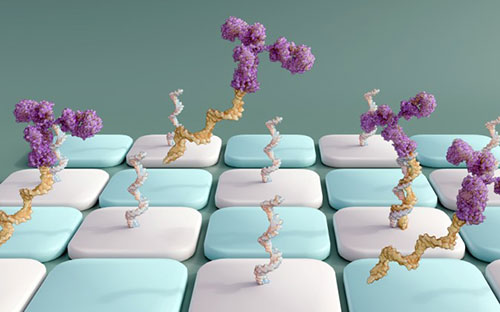
BOC Sciences offers high-quality Oligo Base Modification services, dedicated to enhancing the functionality and stability of oligonucleotides through precise chemical modifications at specific nucleobase positions. We provide customized modifications such as the introduction of methyl, halogen, amino, fluorescent groups, or other functional moieties to improve hybridization specificity, nuclease resistance, and molecular recognition performance in vitro and in vivo.

We provide spacer modifications such as hexaethylene glycol (HEG) and triethylene glycol (TEG) linkers, which are incorporated to adjust molecular flexibility, spatial orientation, and reduce steric hindrance between functional groups. Spacer modifications improve hybridization kinetics and molecular accessibility in complex nucleic acid assemblies or multi-component diagnostic platforms. These modifications are vital when precise distance and conformational control are required to optimize probe-target interactions.
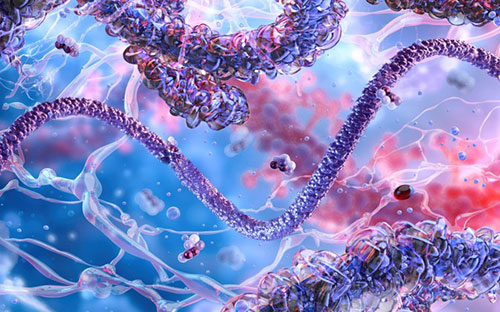
Strategic phosphorylation at the 5’ or 3’ ends of oligonucleotides facilitates enzymatic ligation, labeling, and subsequent molecular cloning or amplification steps. Phosphorylation modifications are integral in the preparation of sequencing libraries, construction of gene-editing vectors, and generation of molecular beacons. Our phosphorylation protocols ensure maximal enzymatic compatibility and functional activity in diverse molecular biology workflows.
Through rigorous quality control and customizable synthesis workflows, BOC Sciences guarantees the delivery of oligonucleotides with precisely defined modifications, enabling researchers to achieve superior performance in their nucleic acid-based applications.
At BOC Sciences, our DNA/RNA modification services follow a rigorous, standardized, and customizable workflow. Each phase is executed under stringent quality control to ensure the successful delivery of high-purity, functionally relevant nucleic acid constructs. Below is a comprehensive breakdown of our step-by-step process:
Each step in our DNA/RNA modification process is executed under strict standard operating procedures and cGMP-like conditions, where applicable, to ensure unmatched product consistency and experimental success. BOC Sciences’ scientific rigor and customization capability make us a trusted partner in advancing nucleic acid-based innovations.
DNA/RNA modification is not merely a laboratory enhancement—it's a critical enabler of precision, innovation, and performance across a vast spectrum of life sciences. At BOC Sciences, our customized modification services empower scientists, engineers, and product developers to realize complex biological objectives with high fidelity and reproducibility. The following outlines the diverse applications where modified nucleic acids play a central, often indispensable, role:
Modified oligonucleotides such as antisense oligos (ASOs), siRNAs, and steric-blocking oligonucleotides are vital tools in regulating gene expression with high specificity.
Example: Backbone-modified ASOs with 2’-O-methyl RNA and phosphorothioate linkages enable effective mRNA silencing while resisting nuclease degradation in cell culture and animal models.
Base-modified oligonucleotides allow researchers to investigate how chemical marks on nucleic acids affect transcriptional regulation and chromatin dynamics.
Use Case:Incorporation of 5hmC or 5fC enables mechanistic studies of TET enzyme activity and oxidative demethylation processes.
Example:Probes labeled with FAM and BHQ1 offer high fluorescence quenching and are widely used in clinical diagnostics and environmental biosurveillance.
Benefit: Spacer-modified oligos reduce secondary structure and increase accessibility, improving ligation efficiency and coverage uniformity.
Oligonucleotide modifications enhance the performance and stability of guide RNAs and donor templates in CRISPR-based applications.
Use Case: Dual-labeled sgRNAs with 2’-O-methyl and phosphorothioate modifications have demonstrated increased editing efficiency and reduced immune activation.
Modified DNA/RNA molecules are foundational components in the construction of programmable bio-molecular devices.
Example:Azide-functionalized DNA strands enable covalent attachment to gold nanoparticles via click chemistry, expanding applications in biosensing and theranostics.
Oligonucleotides functionalized with imaging agents or targeting moieties enable precise visualization and delivery in complex systems.
Benefit: Our thiol- and amine-modified oligonucleotides allow for seamless conjugation to peptides, antibodies, and nanoparticles.
Specialized base or backbone modifications help dissect binding specificity and dynamics of protein-nucleic acid complexes.
Example: Incorporation of abasic sites enables studies on how proteins recognize damaged DNA or intermediate replication structures.
BOC Sciences provides custom-designed, application-specific DNA/RNA modification services to meet the full spectrum of biological inquiry and innovation. Whether you're developing a new RNA interference strategy, engineering synthetic gene networks, or designing a sensitive molecular diagnostic tool, our advanced modifications enable unmatched control, specificity, and functionality.
Yes, we specialize in highly customized oligonucleotides. You can combine 5' and 3' end modifications with internal base or backbone changes in a single construct. Our technical team will evaluate synthesis feasibility and provide recommendations.
We offer a wide range of dyes including FAM, HEX, TAMRA, ROX, Cy3, Cy5, Alexa Fluor series, and more. You may specify dyes based on excitation/emission profiles to match your instrument or assay requirements.
You'll need to provide the DNA/RNA sequence, type and location of modifications, required quantity, desired purification method, and any specific QC requirements. Our team is happy to assist with design consultation if needed.
We employ sequence optimization, specialized synthesis columns, and modified synthesis cycles to improve yield and quality of difficult templates. If required, we will offer design revision suggestions.
Yes, we provide capped RNA, 5'-triphosphorylated RNA, and modified nucleotides (e.g., m6A, pseudouridine) for IVT and functional assays. Please specify during consultation.

